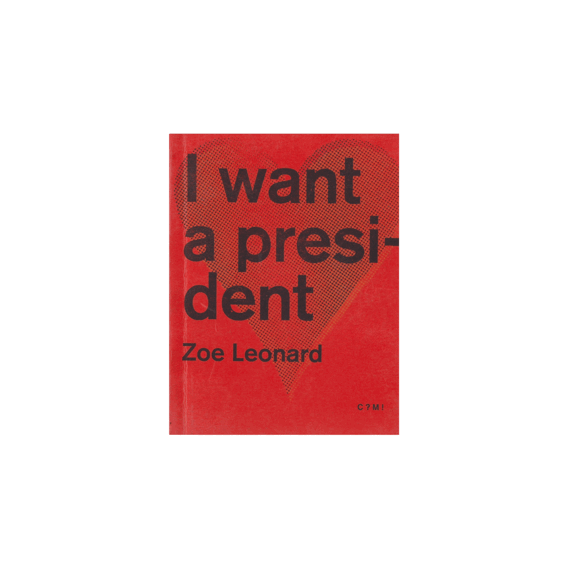




Jane Caputi, Ph.D., Head Curator
Sika Dagbovie-Mullins, Ph.D., Co-Curator
Robert Caputi, Ph.D., Co-Curator
Sofia Honekman, Curatorial Assistant
WARNING: Some of the items in this exhibit graphically expound hate and bias, including racism, sexism, homophobia, xenophobia, and transphobia. Some use obscene language. Please do not continue if you do not want to see these.
Fair Use Notice: The use of the following materials is protected by the Fair Use Clause of the U.S. Copyright Act of 1976, which allows for the reuse of copyrighted materials for the purposes of commentary, criticism, and education.
Artist Zoe Leonard’s caustic 1992 poem “I Want a President” opens with “I want a dyke for president” and closes with a condemnation of the longstanding national imagination of who a president must be, ensuring that the president is “always a john and never a hooker. Always a boss and never a worker, always a liar, always a thief and never caught.”
The president of the United States, commonly said to be “the most powerful person in the world,” is also the symbolic face (and body) of America. Until Barack Obama, that symbolic face has been White, Christian, affluent if not patrician, nominally cisgender, heterosexual, and male. This makes plain a longstanding hierarchy of power and status. Political Pandemonium is the third in a series of exhibits featuring popular presidential campaign paraphernalia that reflects and challenges this hierarchy, along with the related social issues now roiling the nation.
The 2020 election season is one of extreme partisanship, polarization, pandemic, protest, and pain -- emotional, physical, spiritual and economic. This political pandemonium is represented vividly in these artifacts, with many displaying hope and affirmation, but many others based in smears, slurs, distortions, epithets, lies, and stereotypes that either favor or discredit candidates and the social groups they represent.
The purpose of the exhibit is educational. The Smithsonian National Museum of American History collects election-related “material culture” in order to document “the infinite richness and complexity of American history [and] help people understand the past in order to make sense of the present and shape a more humane future.” The accompanying text for Political Pandemonium 2020 provides commentary guided by intersectional feminism, defined by Kimberlé Crenshaw as “a prism for seeing the way in which various forms of inequality often operate together and exacerbate each other.” The hope to engage other perspectives, elicit dialogue, debate and critical reflection, and thus contribute toward building a more humane, peaceful, prosperous, inclusive and egalitarian society, has been long put forth as the promise or dream of this nation.
Presidential popular culture, however outrageous, trite and ephemeral, merits our serious consideration. The items here reflect and contribute to the ongoing cultural exchange about what is true, desirable and imaginable and, hence, what is doable. Presidential pop culture not only provides a mirror to the culture, but functions as one of the forces in that constant process of making and remaking America.
From "I want a president" by Zoe Leonard, written in 1992.
Reprinted and published by Gato Negro Edicione
2017
32 Pages
English
10.5 cm x 8.5 cm
Printed in Risograph

Zoe Leonard “I want a president”
T-shirt
This shows a photograph of the poem as installed on the High Line in New York City in 2016 on the occasion of the 2016 election.


